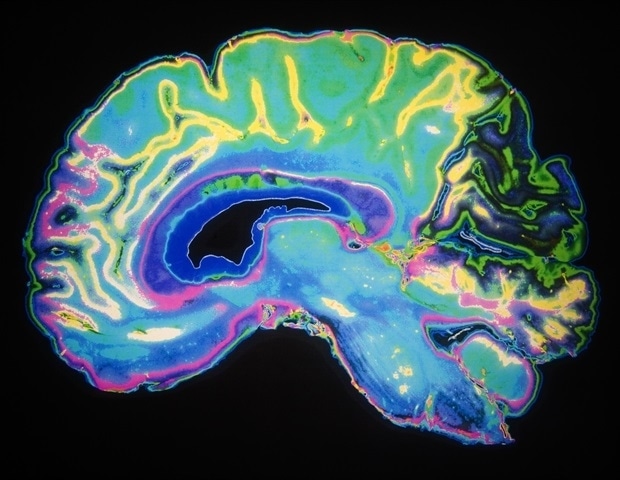
A newly recognized a part of a mind circuit mixes sensory data, recollections, and feelings to inform whether or not issues are acquainted or new—and vital or simply “background noise.”
Led by researchers from NYU Grossman Faculty of Drugs, the work discovered {that a} circuit recognized to hold messages from a mind area that processes sensory data, the entorhinal cortex (EC), to the reminiscence processing middle within the hippocampus (HC) has a beforehand unrecognized pathway that carries messages straight again to the EC.
Revealed on-line February 18 in Nature Neuroscience, the examine outcomes present that this direct suggestions loop sends indicators quick sufficient to immediately tag sights and sounds linked to sure objects and locations as extra vital by contemplating them within the context of recollections and feelings.
Ours is the primary anatomical and purposeful evaluation of each the brand new direct hippocampal-cortical suggestions loop, and the oblique loop discovered many years in the past.”
Jayeeta Basu, PhD, Assistant Professor, Division of Psychiatry and the Division of Neuroscience, NYU Langone Well being
“The variations we discovered of their wiring, timing, and site recommend that the loops have separate however parallel roles that allow them work collectively to encode much more advanced data,” added Dr. Basu, a college member of the Institute for Translational Neuroscience at NYU Langone Well being and a latest winner of the Presidential Early Profession Award for Scientists and Engineers.
A greater understanding of the interaction between the 2 mind areas might yield new options to issues inside associated circuits, researchers say, like these seen as sufferers with post-traumatic stress dysfunction battle to inform aside previous trauma from present loud noises, or within the sensory overload skilled by some youngsters with autism as they attempt to inform aside objects or work together with individuals.
Delicate Indicators
The long-understood mannequin of the studied circuit posits that the hippocampus (HC) receives sensory details about the skin world from entorhinal cortex (EC) floor layers 2 and three, however sends again indicators to the EC solely by not directly wiring first right into a deep EC layer (layer 5), which then routes it into EC floor layers 2 and three. The oblique route could cause time lags that change the HC suggestions indicators.
Utilizing trendy strategies, the present analysis staff discovered a second loop that straight connects the HC to EC layers 2 and three, letting recollections and feelings saved within the HC rapidly add weight to perceived sights and sounds as a part of studying. A paradox within the discipline has been that there is no such thing as a recognized direct pathway connecting the hippocampal reminiscence middle with the mind’s emotional middle, the amygdala. The newfound connections to the EC might function a crossroads.
Different outcomes of the examine map connections between mind cells based mostly on their potential to pump charged particles via channels, increase cost imbalances (potentials) alongside their membranes. Upon receiving the proper sign, cells open their channels, enabling the particles to hurry out (depolarize) underneath electrochemical pressure, with cost flows appearing like switches.
Mind cells in signaling pathways “hearth” as their membrane potential shift, which causes every nerve cell’s extensions (axons) to depolarize till the electrical pulse reaches a synapse, a niche between one cell and the following. When it reaches a niche, the electrical pulse is transformed right into a chemical sign that both turns up (excites) or turns downs (inhibits) the power of the message handed to the following cell, with their combination sculpting indicators underlying ideas and recollections.
Importantly, the present examine measured these properties for the primary time in each loops. Dr. Basu’s staff discovered the beforehand recognized oblique loop to be excitatory, usually triggering all-or-nothing indicators referred to as motion potentials, massive depolarizations that encode data based mostly on their frequency.
The brand new direct suggestions loop, nevertheless, in response to the identical vary of incoming sign power, was discovered to recruit sturdy inhibition in mind cells (neurons) in EC layers 2 and three, by no means eliciting motion potentials. This newfound circuit exercise as a substitute sends small depolarizing potentials from the HC to EC layers 2 and three. The authors say these delicate, repeated indicators can mix with messages from different mind areas to make doable extra intricate computations, accelerated studying, and higher plasticity, the strengthening of connections between neurons.
Shifting ahead, the analysis staff plans to review how hippocampal output associated to feelings and recollections shapes decision-making features in prefrontal cortex or the emotional coding of concern within the amygdala. The staff will even look at what occurs to their newfound direct circuit over the course of getting old and in Alzheimer’s illness in examine mice, and its parallels in people.
Together with Dr. Basu, examine authors from the NYU Langone Institute for Translational Neuroscience had been first writer Tanvi Butola in addition to Melissa Hernandez Frausto, Lulu Peng, Ariel Hairston, Cara Johnson, Margot Elmaleh, Amanda Amilcar, and Fabliha Hussain. Additionally authors had been transgenic device builder Cliff Kentros and his staff members—Stefan Blankvoort and Michael Flatset, of the Kavli Institute for Methods Neuroscience on the Norwegian College of Science and Expertise; together with Claudia Clopath, head of the computational neuroscience laboratory, Division of Bioengineering, Imperial Faculty in London. Dr. Basu led a Nationwide Institutes of Well being (NIH) BRAIN initiative mission grant (2018-2023) with Dr. Clopath and Dr. Kentros to construct the instruments, approaches, and fashions utilized in present circuit mapping examine.
The work was additionally supported by NIH grants R01NS109994, R01NS109362-01, 5013R01MH122391, RM1NS132981, Alzheimer’s Affiliation grant AARGD-NTF-23-23 21151101, a Parekh Heart for Interdisciplinary Neurology pilot analysis grant, a Mathers Basis Award, a McKnight Scholar Award, a Klingenstein Fund – Simons Basis fellowship award in neuroscience, an Alfred P. Sloan fellowship, a Whitehall analysis grant, an American Epilepsy Society junior investigator award, a Blas Frangione younger investigator grant, New York College Whitehead fellowship for junior school, and a Leon Levy Basis award.